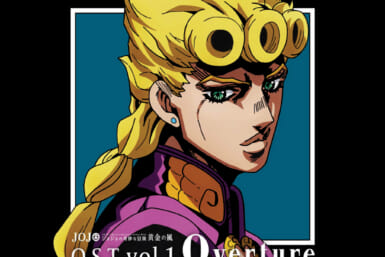A lot of the world may have ground to a halt but, for now at least (largely due to the logistics of the internet age), Japanese artists continue to release tons of new tunes. For some kind of thrill, escape, comfort or, for some, to simply provide something to do, now might be a perfect time to get subsumed in new music. For that reason, there’s certainly a skew in my lists this month towards the engrossing, reassuring or escapist, in addition to the usual standout releases.
Before I get into my favorite albums from April, a few honorable mentions are due. JP the Wavy‘s Life Is Wavy and kZm‘s Distortion are both star-studded, intense hip hop opuses that maintain the global ascendancy of J-hip-hop. Shunichiro Yokosawa’s dreamy, noisy and very, very pretty I’ll Be Fine deserves a mention; as does house music icon Satoshi Tomiie, who continues to prove that he is still more than capable of entrancing on his Immersed EP. Those aside, here’s a brief guide to some of my favourite Japanese albums of April.
Shohei Takagi Parallela Botanica, ‘Triptych’
(Sony Music)
I’m not sure whether lo-fi pop (or “bedroom pop”) is quite as fashionable as it once was. The past few years have certainly seen more than their fair share of musicians that have gained traction – sometimes even gotten record contracts – through homemade, self-recorded and self-promoted releases. But the hype seems to have largely died down. What, you may ask, does this have to do with Shohei Takagi who, as a member of the very-much-not-lo-fi pop group Cero, certainly doesn’t need to record or promote himself in such a way?
On his latest release Triptych, Takagi appears to utilize features of bedroom pop in a way that brings the genre back full-circle. He isn’t the first to realize the textured, atmospheric richness that the style can bring to hi-fi recordings – of which this certainly is – but on Triptych he is wildly successful in applying those techniques to craft detailed soundscapes behind his music. Takagi has clearly also studied works of ambient music, jazz pop and ambient pop but the overall feel of this is as warm, close and immersive as a great lo-fi record.
Triptych takes you into its own muffled world full of carefully manipulated background noise and field samples. Its guitar notes ring out over this expanse, joined by bits of piano, flute, Mellotron and horns. The instrumental build of all these different instruments can feel disconcerting, not only because of the eventual, overwhelming scale of them all but because they build so gradually. Personally, even though the “triptych” concept (a piece of art in three frames) is thought through and this record is impressively complex, most of all I can’t get over the serenity that Takagi achieves here. Triptych is the work of a master sound-craftsman, and may be as good as psychedelic-ambient-jazz-pop ever gets.
Kensuke Ide & His Mothership, ‘Contact From Exne Kedy and the Poltergeists’
(P-VINE)
Kensuke Ide has one of those minds that loves to ponder far beyond the mundanity of Earthly life. An intimidatingly creative man who devoted almost a decade of his life to film before turning to music for his debut album, 2015’s Kensuke Ide & His Mothership, Ide doesn’t produce music often. When he does, his work is conceptually and musically peerless.
https://youtu.be/BM0V3oqnHwo
Contact From Exne Kedy and the Poltergeists is his second album with his “mothership” of musicians, five years later and teeming with more insight into his vast imaginary world and serious musical talent. His band has changed, now consisting of different household names such as mmm and Mei Ehara; all produced by You Ishihara and engineered by Souichirou Nakamura, both known for their works on records by Yura Yura Teikoku, White Heaven and Stars. Despite that change in lineup, however, Exne Kedy is just as good a release as – or perhaps even better than – Ide’s debut.
In spite of the absurdity of its subject matter (and album cover), Exne Kedy is unexpectedly forthright. Psychedelic rock in the extra-terrestrial, surreal style of the likes of Acid Mothers Temple, Ide takes a lot of elements from ‘60s psych-rock but injects a very bold, contemporary strut. His brand of psychedelia shows the complexity, instrumental depth and adoration of brass of progressive rock, but also includes elements of dub, folk rock, glam rock, dream pop, and even traditional folk.
Exne Kedy has a taste for the theatrical without losing its footing as a spectacular piece of music. Whatever goes on in Ide’s mind is still anyone’s guess, but if we get music this great (even every five years) then he is surely one of most rewarding enigmas in Japanese rock.
Domico, ‘Voo Doo?’
(PRON)
Domico’s enthusiasm for when they’ve written a bonkers riff is infectious. They know when they’re onto something special. On the opening track of Voo Doo?, they orchestrate an entire intro that announces the riff of lead single “Bakeyo” and they do it with splendor. One might think that could all be a bit much – but ‘Bakeyo’ really is quite something. Its arpeggios fly and bounce around, not just a riff but a flitting, dizzying texture behind the whole track. As a single, it was a decent track, but here Domico put it on a podium that makes its brilliance impossible to ignore.
While the rest of Voo Doo? doesn’t quite maintain the heights of its opening track, it’s still a must-listen for any rock fans. Bit-psychedelic and bit-alt-rock, Domico have a sound that is littered with a broad array of classic rock influences. Their consistent songwriting and restraint from overproduction keeps those influences heard, Voo Doo? is deceptively simple in its verse-bridge-chorus structures and lack of overdubbing but is all the better for it. Voo Doo?has pretty much everything you need for a great, no frills rock release: it’s swaggering, seedy and great fun.
Asa-Chang & Junray, ‘Incident’
(Airplane)
Asa-Chang & Junray have been making strange, very arty pop music for almost two decades. One can only admire how successfully they’ve ensured that each new release brings something fresh to their catalogue. They still don’t sound quite like anyone else, intent on pursuing a style of pop that is simultaneously both subtle and very out there.
Incident reliably continues in that vein. Its subtleties lie in its almost-unnoticeable glitches and folky meddling, the kind of experimentation that doesn’t go shouting about itself. At the opposite pole lies the blunter side to their artiness, namely the vocals and percussion. Asa-Chang’s vocals can be either monotone, warped, chanted, squeaked or plainly sung, dominating with phrases that are simple but playfully expressed. As for the percussion, well, most of Incident is percussion. Vocals are used alongside tabla, congas and blares of horn to dictate and intentionally play with the rhythm.
On first few listens, Incident is all a bit baffling and a difficult record to pen down in writing. Once it clicks, however, it becomes another solid album from Asa-Chang & Junray, who are as uncategorizable, unpredictable and strange as ever.
P.S. Asa-Chang released another EP this month called Eros, a collection of covers with minimal synth player Emerson Kitamura. Similarly odd but far less consistent than Incident, most objectionable is an ear-scraping interpretation of Cynthia Lauper’s AOR staple “Time After Time”; the best, on the other hand, a sublime cover of Ryuichi Sakamoto’s “Paradise Lost.”
ASUNA, Tomoyoshi Date & Federico Durand, ‘In the Open’
(Dauw)
In this quaint, blustery 15-second video on YouTube, Asuna, Tomoyoshi Date and Federico Durand are making music in the grounds of Kanazawa Castle. It’s an intriguing and slightly bizarre spectacle. Though that video dates from 2017, it happens to document part of the making of In The Open. In their own words, they “made field recordings alongside castles, gardens and ponds, a soba house, sometimes playing while walking the city. All of these tracks are live recordings of that day in the open.”
Three esteemed ambient and field recording musicians in their habitat, taking in the sights and sounds and applying them to their craft with only some small battery-powered keyboards, tiny instruments and a recorder: the premise alone sounds meditative, even therapeutic. In practice, it makes for a lovely 40 minutes; rough for an ambient work (you can often hear them breathing, shuffling and so on) but, once in the swing of things, so delicate it hardly sounds like the musicians are there at all.
For those of us that cannot go outside at the moment, In The Open obviously doesn’t offer a substitute. It does, however, provide a fresh reminder of how ambient music can interact with a given environment and, in some regard, paint a detailed landscape of a specific time and place. It’s an idyllic example of the capacity of ambient music to transport and distract, the product of the friendship of three of the style’s most impressive musicians.









